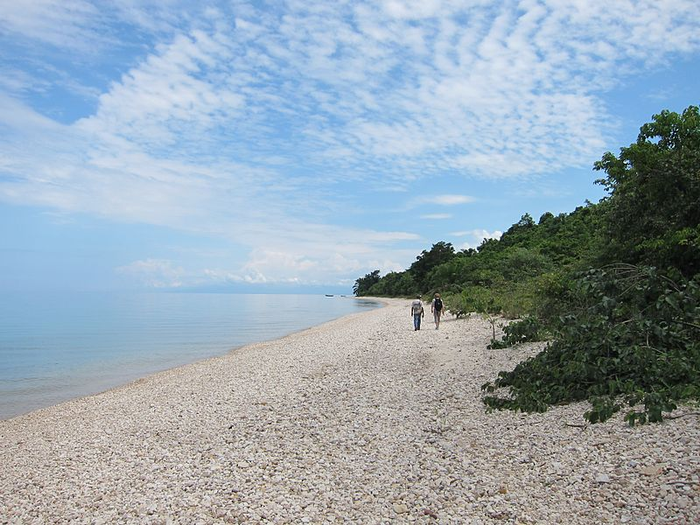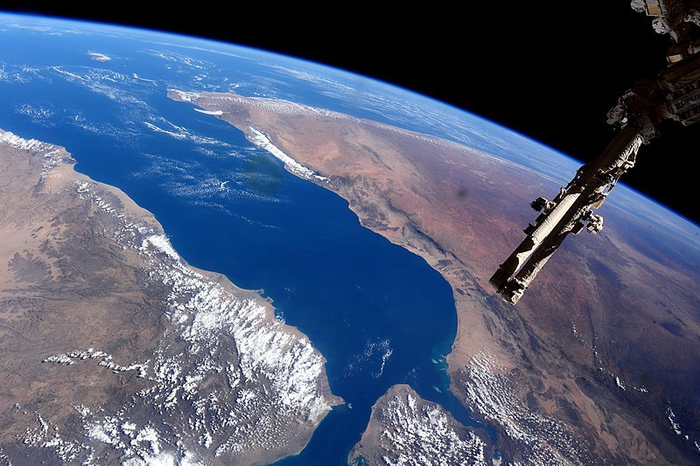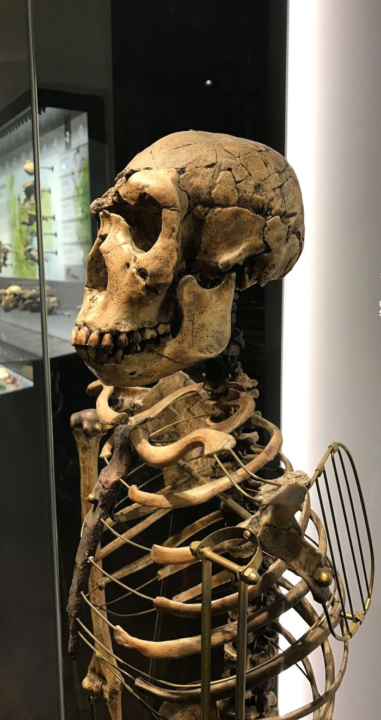Image: The Great Rift Valley as taken from Ethiopia. Source: Wikimedia Commons
Stretching over 6,400 kilometers from the Middle East to Mozambique in East Africa, the Great Rift Valley is a prime example of the Earth’s powerful forces at work. Tectonic activities have been a major cause of the creation of this split.
The Great Rift Valley has a diverse range of spectacular sceneries including volcanic mountains, vast plains, abundant and unique wildlife, and beautiful lakes. The three largest lakes in Africa namely; Lakes Victoria, Tanganyika, and Malawi, and other lakes such as lakes Turkana, Albert, Edward, and Kivu can also be located around the Great Rift Valley.

Image: Lake Tanganyika. Source: Wikimedia Commons
It is also home to the Jordan River which flows south through Lake Hula into the Sea of Galilee into the Dead Sea and then onwards into the Gulf of Aqaba and the Red Sea.
Historically, geologists have always found the Great Rift Valley a wonder due to its continued geological activity. The Earth’s tectonic forces are continually trying to create new plates by splitting apart old ones. These tectonic activities have further created several rifts which are all connected yet not part of a single system.
In the Northern part lies the Jordan Rift Valley stretching to the Golan Heights around Israel’s border with Syria and Lebanon. To the south is the Red Sea Rift and further south of the Red Sea Rift lies the gigantic East African Rift.
Within the East African Rift is the Gregory and Western Rift which is sprinkled with several volcanoes and mountains like Mount Kilimanjaro in Tanzania, Mount Nyiragongo in the Democratic Republic of Congo, and Mount Kenya. One of the spectacular features of the Gregory Rift is the Horn of Africa which bestrides the Red Sea and the Gulf of Aden in the Arabian Sea. It is here where the Afar Triple Junction is located. Astronauts claim that the Great Rift Valley and its geological wonder is one of the most significant details of the planet when viewed from space.

Gulf of Aden and the Horn of Africa as seen from space. Source: Wikimedia Commons
The exceptional features of the Great Rift Valley have fostered the preservation of fossil records which is a delight for paleontologists. The area has provided a rich history of the evolution of humans and animals. It was here that the famous fossil of “Lucy” , a 3 million-year-old incomplete skeleton was found. This remarkable discovery disproved the belief that early hominins were four-footed animals.
Another momentous finding where the fossil discoveries made at Lake Turkana amongst which is the discovery of an almost complete fossilized skeleton dating back to almost 1.5 million years ago. This was the discovery of the Homo erectus which is famously known as “Turkana Boy.”
Other significant findings such as the Homo Habilis or “HandyMan ” were discovered around the Olduvai Gorge in Tanzania. These discoveries offered insights into the advancements of early human civilizations leading many to believe that the Cradle of Mankind can be found in Africa.

Image: Turkana Boy. Source: Wikimedia Commons
Apart from human fossils, paleontologists exploring the Great Rift Valley have also unearthed the remnants of extinct species. This has helped offer insights into the migratory pattern of the diverse range of species as well as the areas they inhabited.
The Great Rift Valley is also home to several national parks and wildlife reserves. Tourists from all over the world come to The Maasai Mara National Reserve in Kenya to witness the annual wildebeest migration.
Tanzania’s Ngorongoro Conservation Area is also home to the world’s largest unbroken volcanic caldera, a UNESCO World Heritage Site that supports a wide array of wildlife. Other reserves such as the Lake Nakuru National Park, and Samburu National Reserve are some of the best reserves around the valley.
The Great Rift Valley offers an extraordinary insight into humanity’s history while opening the door to the vibrant nature of our planet.

Okechukwu Nzeribe works with the Onitsha Chamber of Commerce, in Anambra State, Nigeria, and loves unveiling the richness of African cultures. nextquestservices@gmail.com





